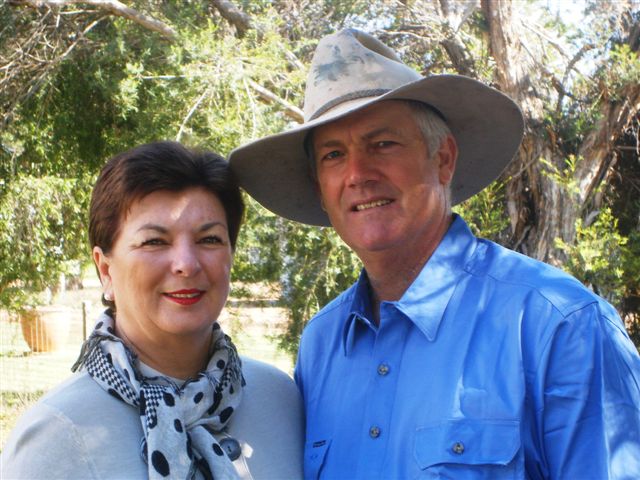 Founded in 1974, Well Gully Poll Merino Stud (Flock No. 1106) was registered in 1987. The story of Well Gully’s development and success is one built on innovation, and the dedication of Errol and Candy Brumpton. In 1974, Errol set out to breed an advanced Merino following his studies in wool technology. Understanding the biological function and chemical makeup of wool coming into an era of wool selling by micron, he realised there was a lot to be advanced on the tradition of sheep breeding and wool growing. Through decades of data recording and a process of genetic selection based on science not tradition, Well Gully has developed a highly profitable wool and meat sheep bred to thrive in tough Australian conditions.
Founded in 1974, Well Gully Poll Merino Stud (Flock No. 1106) was registered in 1987. The story of Well Gully’s development and success is one built on innovation, and the dedication of Errol and Candy Brumpton. In 1974, Errol set out to breed an advanced Merino following his studies in wool technology. Understanding the biological function and chemical makeup of wool coming into an era of wool selling by micron, he realised there was a lot to be advanced on the tradition of sheep breeding and wool growing. Through decades of data recording and a process of genetic selection based on science not tradition, Well Gully has developed a highly profitable wool and meat sheep bred to thrive in tough Australian conditions.
The stud’s history has been characterised by the uptake of new technology (Well Gully was the first Poll Merino Stud in Queensland to undertake carcase muscle (EMD) and carcase fat scanning) and this is demonstrated in the flocks that are now benefiting from Well Gully genetics, from Julia Creek in far north Queensland to Bruny Island off the Tasmanian coast.
Along the way Well Gully has amassed a number of remarkable achievements. In 1996 wool from Well Gully was used to make the world’s lightest woollen cloth – 150 grams per lineal metre. Well Gully was the first producer in the world to deliver wool for this type of non-prickle fabric (close to skin wear).
Incredibly, the bright, glossy 18 micron wool with a distinct deep, bold horseshoe crimp that is a hallmark of the Well Gully operation, comes from an animal that produces the desired meat and carcase traits, along with exceptional fertility and maternal instincts. Where the average conversion ratio for the Australian Merino is around 8 to 1, Well Gully sheep exhibit conversion ratios as low as 3.5 to 1.
Well Gully’s recent history has seen the development of four families of mules-free sheep – yet another example of what can be achieved when a program of innovation, based on sound science and drawing on historical record keeping, combines to meet market demands.
